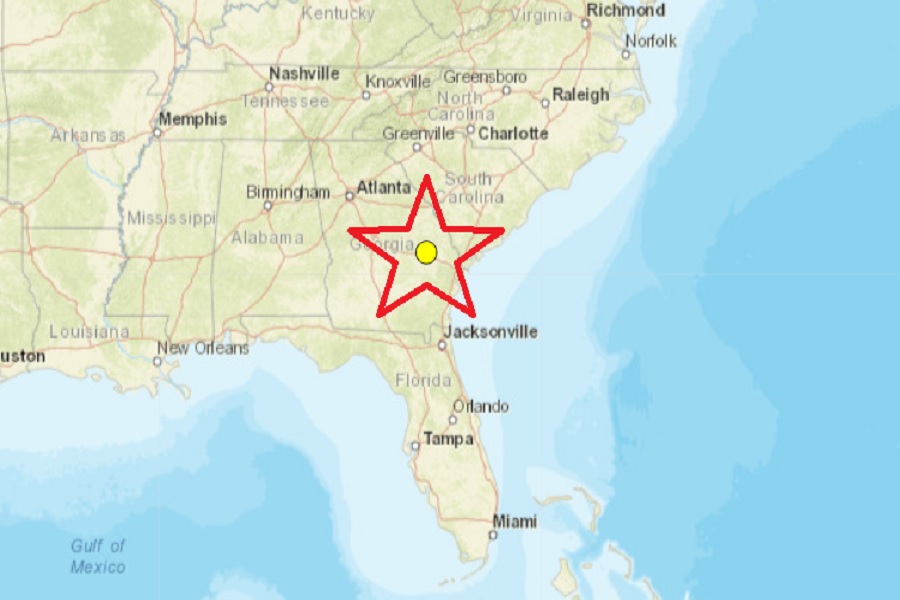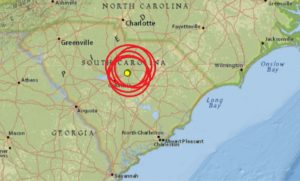
A rare Georgia earthquake struck eastern Georgia this weekend, with reports of shaking felt in Atlanta; the quake even prompted a bulletin from the National Weather Service Tsunami Warning Center in Palmer, Alaska, confirming that a 4.5 earthquake struck in Georgia while reassuring residents of the U.S. East Coast that there is no tsunami threat.
The earthquake struck just after 4am Saturday morning in Candler County, about 7 miles east of Stillmore, Georgia. Even though the earthquake was more than 150 miles away, it was felt throughout the city of Atlanta. While the Tsunami Warning Center’s initial bulletin has the earthquake set as a 4.5 magnitude event, USGS’s first analysis pegged it at 4.2. A subsequent reanalysis of data further reduced the earthquake to a magnitude 3.9 event. USGS says it was felt across a large area because it was so shallow.
While earthquakes this strong do strike in the northern portion of the state in and around the mountains, an earthquake of this size is quite rare in southeastern Georgia. The last earthquake within 30 miles of this one with comparable intensity occurred in 2003. That 3.6 magnitude earthquake struck in Cobbtown, Georgia. Before that, there was a 3.7 magnitude event in Hixton which hit in 1976.

Georgia isn’t the only place to have an unusual earthquake recently: South Carolina has been seismically active since last December, with more than 2 dozen earthquakes impacting the state. Experts are concerned that a large scale earthquake will strike in South Carolina at some point in the future and bring about significant damage and loss of life. While more than 100 years have passed since the last large earthquake, a 2001 study titled “Comprehensive Seismic Risk and Vulnerability Study for the State of South Carolina” confirmed the state is extremely vulnerable to earthquake activity. The study, based on scientific research, provided information about the likely effects of earthquakes on the current population and on modern-day structures and systems, including roadways, bridges, homes, commercial and government buildings, schools, hospitals and water and sewer facilities.
Earthquakes in the southeast could be strong enough to create a tsunami along the U.S. East Coast, Bahamas, and Caribbean. An earthquake in the Caribbean itself can also do the same. This weekend’s seismic event in Georgia wasn’t nearly strong enough to create one though. The National Weather Service’s Tsunami Warning Center wrote a very brief, “There is NO tsunami danger from this earthquake” within 16 minutes of it striking Georgia.
While more than 2,000 people reported feeling this earthquake to USGS, there are no reports of injuries or damages.